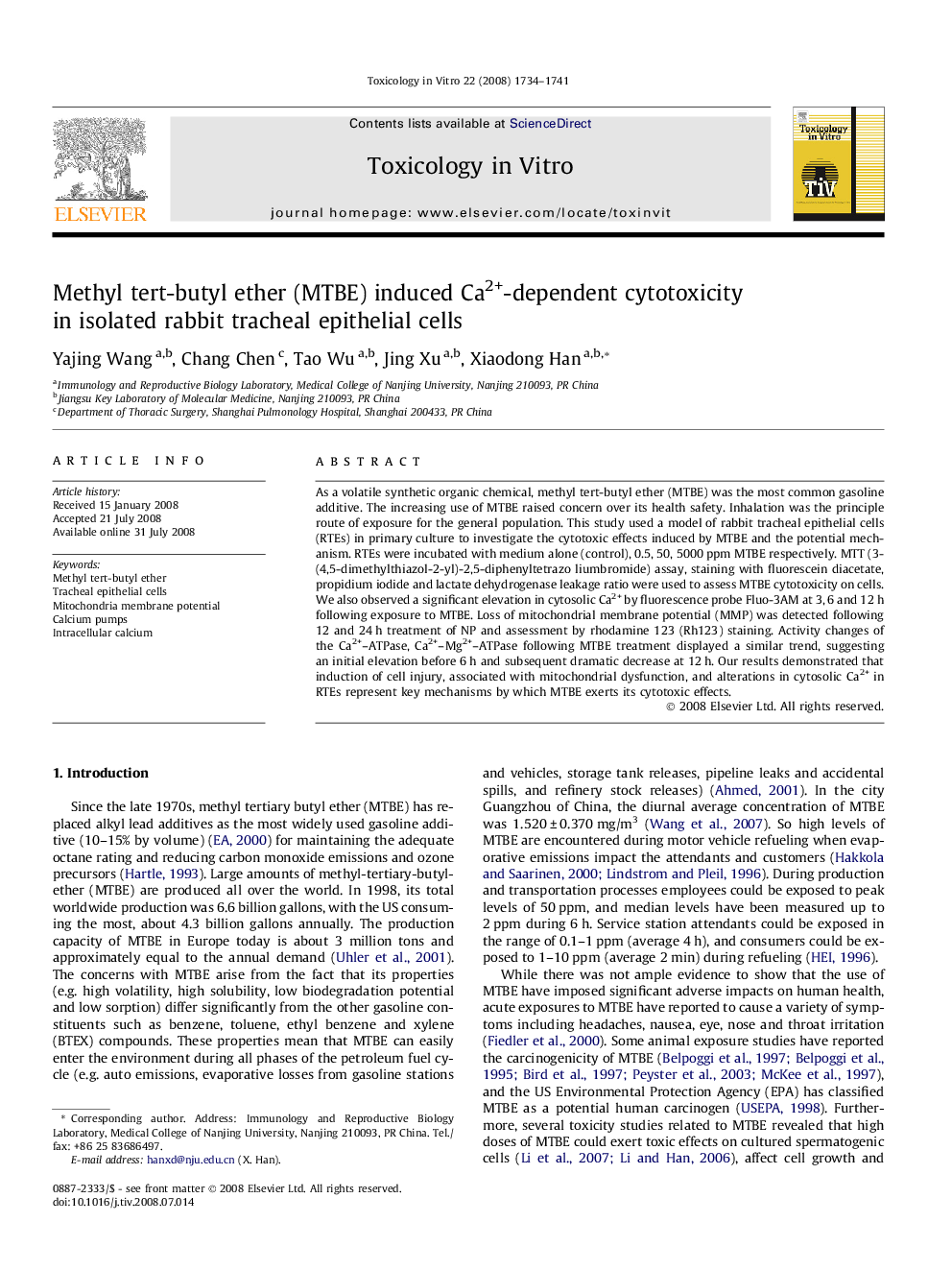| Article ID | Journal | Published Year | Pages | File Type |
|---|---|---|---|---|
| 2603746 | Toxicology in Vitro | 2008 | 8 Pages |
As a volatile synthetic organic chemical, methyl tert-butyl ether (MTBE) was the most common gasoline additive. The increasing use of MTBE raised concern over its health safety. Inhalation was the principle route of exposure for the general population. This study used a model of rabbit tracheal epithelial cells (RTEs) in primary culture to investigate the cytotoxic effects induced by MTBE and the potential mechanism. RTEs were incubated with medium alone (control), 0.5, 50, 5000 ppm MTBE respectively. MTT (3-(4,5-dimethylthiazol-2-yl)-2,5-diphenyltetrazo liumbromide) assay, staining with fluorescein diacetate, propidium iodide and lactate dehydrogenase leakage ratio were used to assess MTBE cytotoxicity on cells. We also observed a significant elevation in cytosolic Ca2+ by fluorescence probe Fluo-3AM at 3, 6 and 12 h following exposure to MTBE. Loss of mitochondrial membrane potential (MMP) was detected following 12 and 24 h treatment of NP and assessment by rhodamine 123 (Rh123) staining. Activity changes of the Ca2+–ATPase, Ca2+–Mg2+–ATPase following MTBE treatment displayed a similar trend, suggesting an initial elevation before 6 h and subsequent dramatic decrease at 12 h. Our results demonstrated that induction of cell injury, associated with mitochondrial dysfunction, and alterations in cytosolic Ca2+ in RTEs represent key mechanisms by which MTBE exerts its cytotoxic effects.
